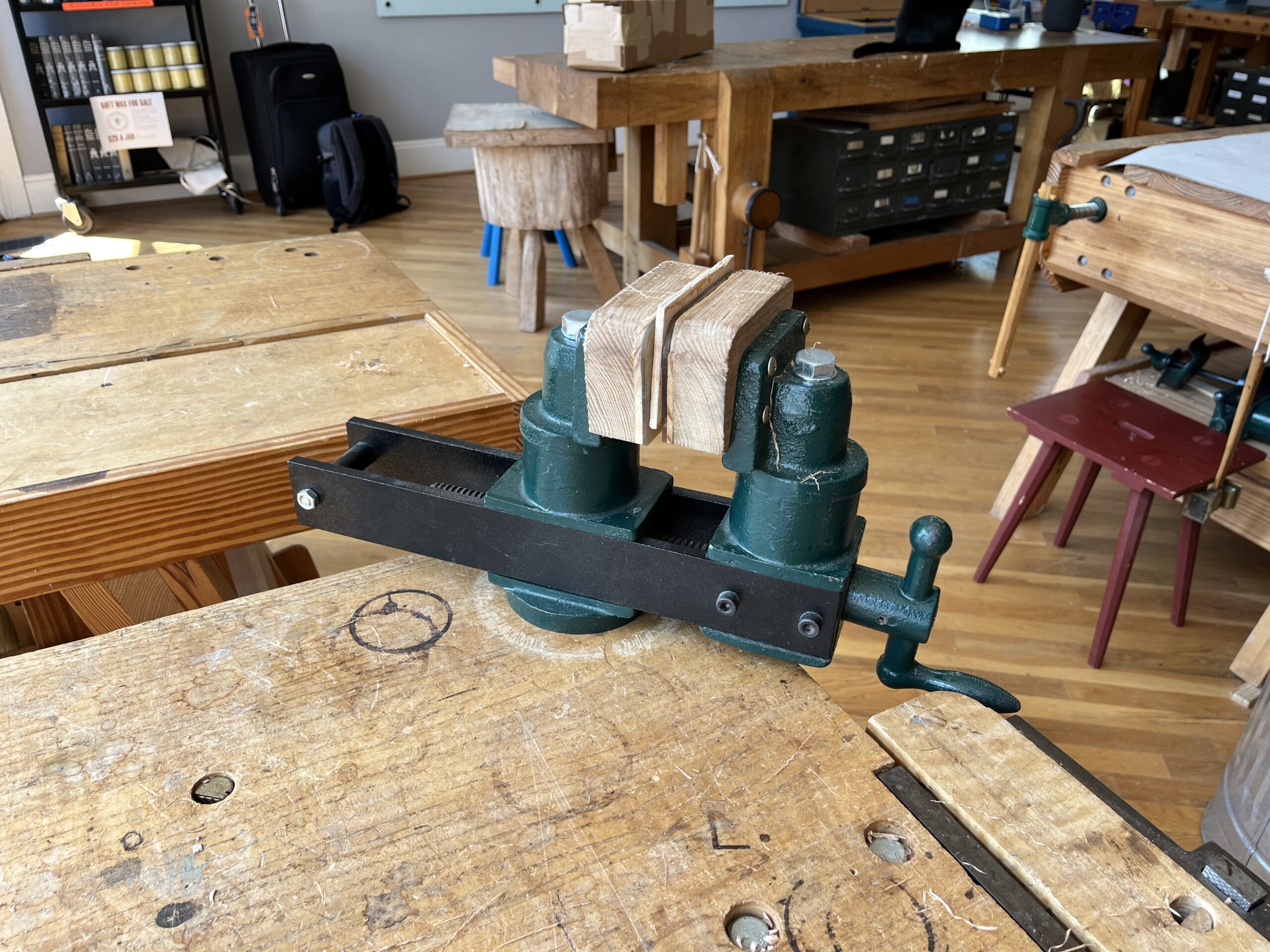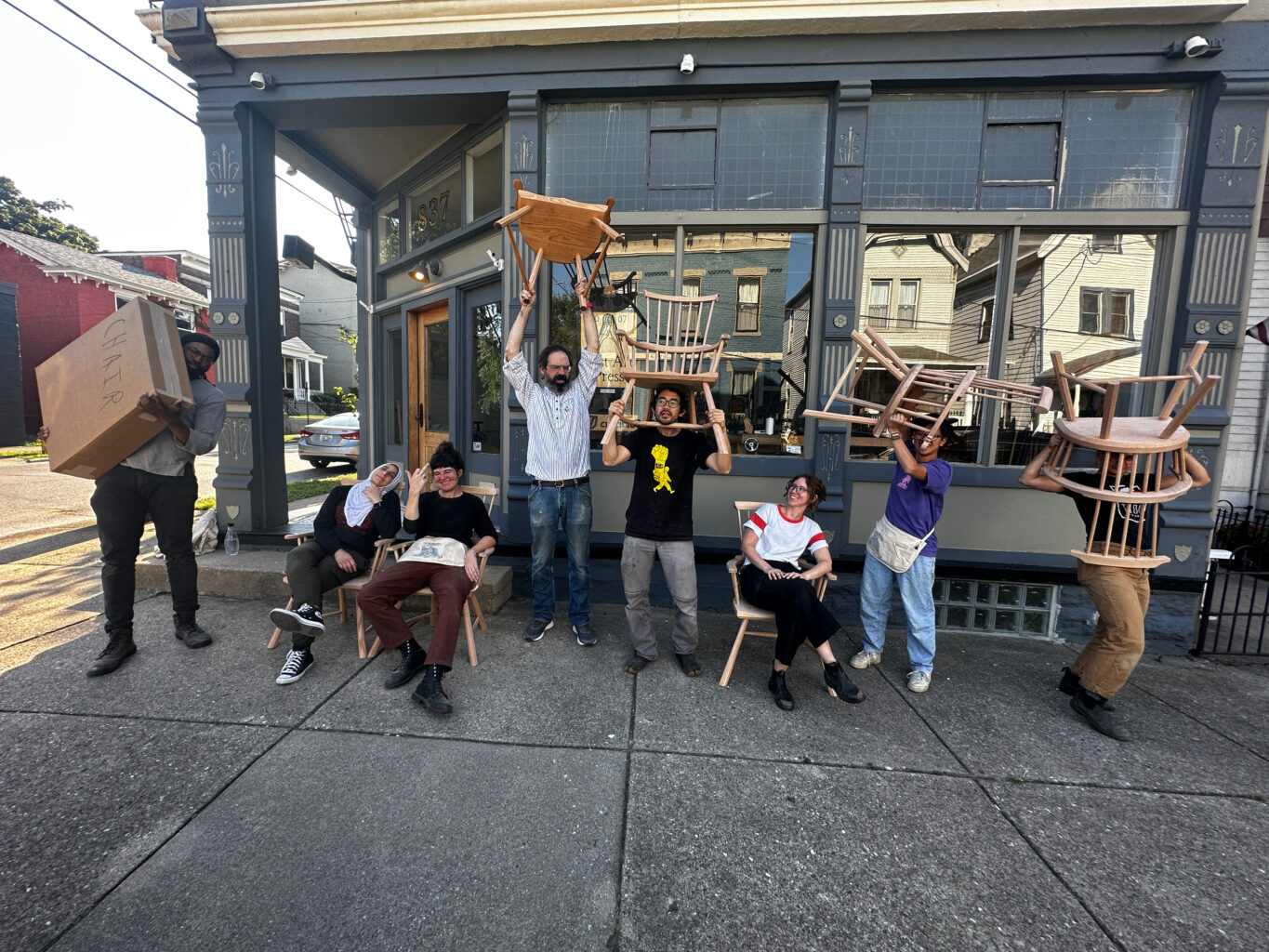
I woke to a text this morning from Chris: “Found this tip for making our carving vises lower.” (See above.)
“Put the base on the underside. Works great. Might be helpful for you.”
Even though he’s off teaching in Germany, he’s still looking for ways to improve our shop here in Covington.
It’s no secret that I’m the most vertically challenged person in the shop (with Megan just a few inches taller). Megan’s two benches are 30″ high; the other six are 33″ and 34″ – and because I want the larger surface and good window light of the Holtzapffel (34″ high), this forces me to finagle myself into some awkward positions when performing certain tasks.
When building my first chair with Chris, I had block planed only half of my first long stick against Chris’s carver’s vise before my shoulder nearly gave out. Chris quickly corrected this by bringing the low Roman bench into the shop from the back room. Using my body weight, I propped the long stick against the Hulot block with my chest to plane. Instant relief.
So needless to say, I was elated to wake up to this little spark of ergonomic hope from Chris. I was eager to give it a go.
I mounted the carver’s vise to my bench. First with the base on top, in its typical location. Then with the base underneath. I measured the height of the base beforehand out of curiosity. 1-3/8″. Could it really make that big a difference?


Now the difference in the photos may not look dramatic to you, but I truly could feel a difference. The ability to lower my hands nearly 2″ allowed my shoulders to relax. This immediately relieved tension and allowed my arm muscles do most of the work.
I also noticed the stick’s placement against my body. With the base located underneath the bench, the stick was able to sit lower on my chest, nearly against my belly. Lowering the stick’s gravity and having the stick land in an area that has more cushion than my sternum was more comfortable overall.
I know what you’re thinking and sure, this trick may not be the be-all and end-all solution to short-person-on-tall-bench carver’s vise issues. But I think this is a great start. My shoulders will be thanking me for this technique after planing seven long sticks.

There is one problem with this arrangement, however. Because the vise is flush with the benchtop, the handle used to tighten the jaws bumps into the bench. You have to have the handle hanging fully off the edge, which limits the vise position.
All in all, though, I’m pleased with this simple modification. I plan to keep my vise in this position while working to continue feeling it out and work out any kinks along the way. What do my fellow shorties think?
– Kale Vogt








